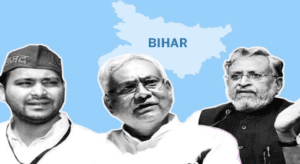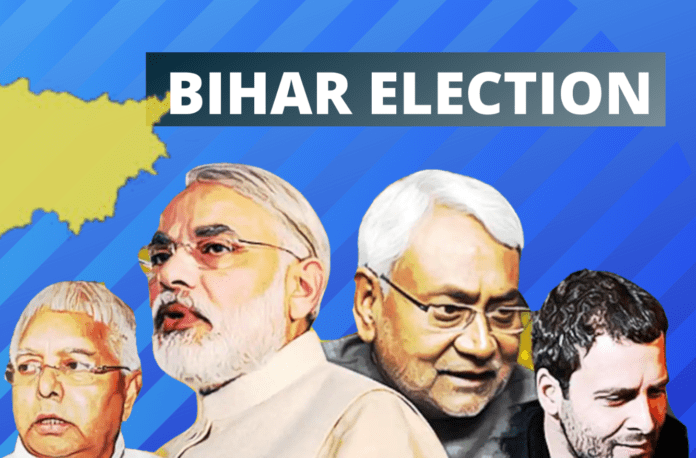Nitish Kumar’s Political Odyssey, A Detailed Exploration of Leadership, Alliances, and Strategic Shifts to Bihar election 2024.
2 min read 2024-01-27, 12:15 AM IST
| Summary
|

Nitish Kumar, a stalwart in Indian politics, has once again captured the nation’s attention, prompting widespread discussions about his recent political moves. As the intricacies of his actions unfold, questions naturally arise, prompting an examination of the underlying reasons and motivations that drive Kumar’s decisions.
In the initial stages, the prevailing belief was that Nitish Kumar’s government in Bihar was in collaboration with the Rashtriya Janata Dal (RJD), led by the charismatic Lalu Prasad Yadav. Notably, Tejashwi Yadav, Lalu Prasad Yadav’s son, served as the Deputy Chief Minister of Bihar, indicating a complex political landscape. However, Nitish Kumar, known for his astute political maneuvering, embarked on a mission to unite opposition parties.
Kumar initiated efforts to bring together opposition parties that had maintained a distance from the Indian National Congress. Despite facing challenges and reservations, he actively engaged with various opposition leaders, outlining a comprehensive plan for implementation. The overarching ambition was to emerge as the unanimous face of the opposition against Narendra Modi, with the prospect of becoming the prime ministerial contender in the 2024 Lok Sabha elections.
ALSO READ| Prime Minister Modi’s Pre-Summit Visit Sets the Stage for Vibrant Gujarat Global Summit.
The discontent reached its pinnacle when Mamata Banerjee, the formidable leader from West Bengal, chose to independently contest elections without aligning with the Congress. This development signaled a paradigm shift for Nitish Kumar, who began reassessing his political strategy. The strains in the alliance were further exacerbated when Mamata Banerjee accused Rahul Gandhi of not informing her about his visit to West Bengal, showcasing Kumar’s growing disillusionment.
The Congress’s handling of seat distribution and the failure to form a consensus face for the opposition profoundly impacted Nitish Kumar’s aspirations. As it became apparent that he might not emerge as the unanimous opposition face, Kumar expressed his indifference, signaling a departure from the earlier alignment.
The Bihar elections, a crucial battleground, became a litmus test for Nitish Kumar’s political relevance. The intricate dance of alliances and strategic decisions unfolded against the backdrop of Rahul Gandhi’s ‘Nyaya Yatra’ across the country. Nitish Kumar’s absence from this political journey indicated a widening gap between him and the Congress.
The turning point in Nitish Kumar’s political trajectory came when he opted for a pragmatic realignment with the National Democratic Alliance (NDA). Assessing the changing political landscape, Kumar envisioned the benefits of aligning with the NDA for the 2024 Lok Sabha elections. This strategic move aimed to strengthen his party’s position, prevent further weakening, and secure a brighter political future.
In retrospect, Nitish Kumar’s decision to realign with the NDA mirrors the challenges faced by Congress. His actions can be interpreted as a leader navigating the complex web of Indian politics, making pragmatic choices to safeguard his party’s interests. As a political veteran, Kumar sensed the direction of the political wind and adjusted his sails accordingly.
In conclusion, Nitish Kumar’s political journey, marked by alliances, strategic shifts, and evolving dynamics, reflects the nuanced nature of Indian politics. His decisions, influenced by a changing political landscape and internal party dynamics, offer a glimpse into the complexities of leadership and decision-making in the Indian political arena.”

